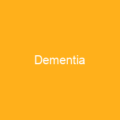Understanding the Formation and Impact of Thrombi
Imagine a river flowing smoothly, its waters clear and unobstructed. Now, picture a sudden blockage forming within it – that’s akin to what happens when a thrombus (blood clot) forms in our blood vessels. This blockage can be both a natural response to injury and a dangerous condition known as thrombosis. Let’s dive into the fascinating world of thrombi and explore their formation, classification, and treatment options.
The Formation of Thrombus: A Closer Look
Thrombi are essentially clumps of aggregated platelets, red blood cells, and fibrin protein. They form as part of the body’s natural healing process – a healthy response to injury. However, when these clots occur inappropriately or persistently, they can pose significant health risks.
Microclots vs. Mural Thrombi
Thrombi are categorized into two main types: arterial and venous. Arterial thrombi predominantly consist of platelets, while venous thrombi are more composed of red blood cells. Microclots form in the microcirculation and can cause issues like pulmonary embolism, whereas mural thrombi adhere to the inner walls of large vessels, often due to blood stasis. These conditions highlight how crucial it is to understand the different types of thrombi for effective treatment and prevention.
Virchow’s Triad: The Foundation of Thrombus Formation
The formation of a thrombus can be attributed to Virchow’s triad, which includes three key factors: endothelial injury, hemodynamic changes (stasis or turbulence), and hypercoagulability. Think of these as the ingredients in a recipe for clot formation.
Endothelial Injury
When the endothelium (the inner lining of blood vessels) is injured, it exposes factors that trigger platelet activation and aggregation. This is akin to peeling back the bark on a tree, revealing its vulnerable core.
Hemodynamic Changes
Blood stasis or turbulent flow can significantly increase the risk of thrombus formation. Imagine a river flowing too slowly; it’s more likely to deposit sediment and form obstructions. Similarly, when blood moves too slowly through vessels, it increases contact between platelets and coagulative factors.
Hypercoagulability
This refers to any condition that makes the blood more prone to clotting. It can be due to genetic disorders, certain medical conditions like atrial fibrillation or heart valve replacement, or even cancer. These conditions make the river of life flow with a higher risk of blockages.
Thrombus Formation and Its Consequences
A thrombus can form in an uninjured vessel when the hemostatic process is activated. Depending on its location, it can either decrease blood flow (mural thrombus) or completely cut off blood supply to a small vessel (occlusive thrombus), leading to tissue death.
Risk Factors and Prevention
Conditions like atrial fibrillation, heart valve replacement, and genetic deficiencies in clotting abilities can increase the risk of developing blood clots. Anticoagulants such as heparin and warfarin are used to prevent clot formation, while thrombolytic drugs like streptokinase help dissolve existing clots.
Thrombus Treatment: A Multifaceted Approach
Treatment options for thrombi vary depending on the type and location of the clot. Anticoagulants prevent further clotting, while thrombolytic drugs like streptokinase or tissue plasminogen activator (tPA) help break down existing clots.
Enzymes from Nature
Nature provides some unique solutions. For instance, the Amazon leech Haementeria ghilianii produces an enzyme called hementin that can dissolve fibrin in blood clots. This natural approach offers a fascinating alternative to synthetic drugs.
The Four Outcomes of Thrombus Formation
Once formed, thrombi can have one of four outcomes: propagation (growing towards the heart), embolization (breaking free and traveling elsewhere), dissolution (being broken down by natural processes), or organization and recanalization (where new tissue grows into the clot to restore blood flow).
Conclusion
In conclusion, understanding thrombi is crucial for managing cardiovascular health. From the intricate process of their formation to the diverse treatment options available, each step in this journey highlights the complexity and importance of maintaining a healthy circulatory system.

You want to know more about Thrombus?
This page is based on the article Thrombus published in Wikipedia (retrieved on December 30, 2024) and was automatically summarized using artificial intelligence.






